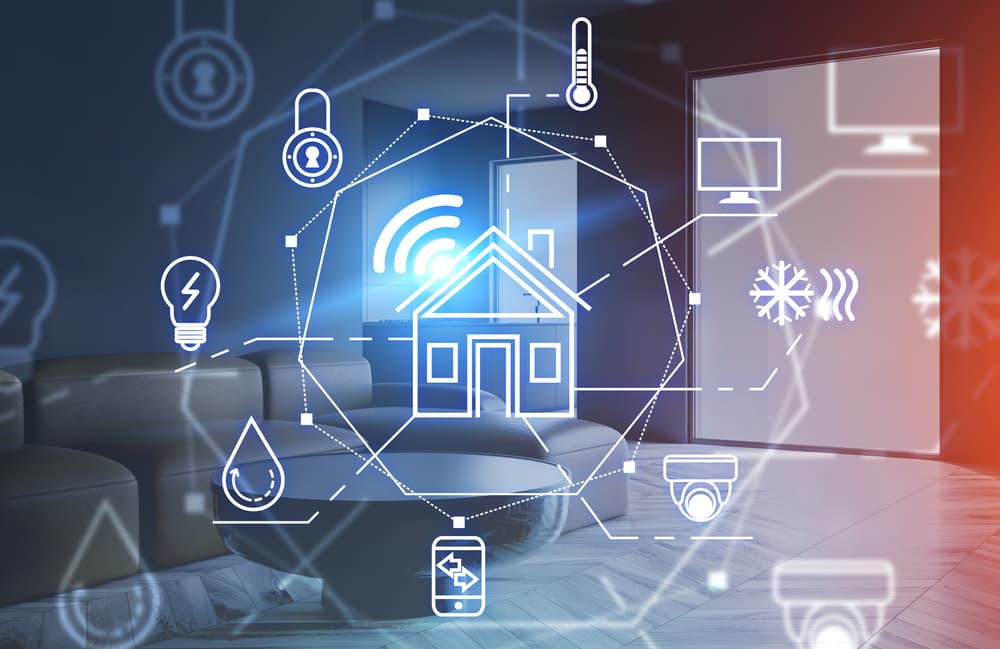
The Ultimate Smart Home Guide to Modern Living for Convenience and Security
Introduction: Embracing the Future of Living
Welcome to the era of smart homes — where convenience, energy efficiency, and advanced security are not just luxuries, but essential elements of modern living. In this comprehensive guide, we’ll explore how smart technology can transform your home into a fully integrated, intelligent space. Whether you’re new to smart homes or looking to upgrade your existing setup, this guide covers everything from essential devices and systems to implementation strategies and benefits.
Table of Contents
- What is a Smart Home?
- Benefits of Smart Home Technology
- Must-Have Smart Home Devices
- Smart Home Hubs: Centralized Control
- Smart Lighting Systems
- Smart Thermostats and Climate Control
- Smart Home Security Solutions
- Voice Assistants and AI Integration
- Smart Appliances for Kitchen and Laundry
- Smart Entertainment Systems
- Smart Gardening and Outdoor Automation
- Home Automation for Seniors and Accessibility
- Building a Budget-Friendly Smart Home
- Compatibility and Ecosystem Considerations
- Privacy and Data Security in Smart Homes
- DIY vs. Professional Installation
- Energy Efficiency and Eco-Friendly Living
- Smart Home for Renters
- Creating a Future-Proof Smart Home
- Common Pitfalls to Avoid
- Smart Home Trends for 2025 and Beyond
- Smart Home Maintenance and Troubleshooting
- Best Smart Home Apps
- Smart Home Insurance Benefits
- Real-Life Smart Home Case Studies
- Integrating Smart Home with Renewable Energy
- Setting Up a Smart Home Office
- Smart Home Automation for Pets
- Innovations in Smart Furniture
- Final Thoughts and Future Innovations
1. What is a Smart Home?
A smart home is a residence equipped with devices that automate and control various household systems — from lighting and climate to security and entertainment — using a central network. These devices can be managed remotely via smartphone apps or controlled through voice commands using AI-powered assistants like Alexa, Google Assistant, or Siri.
2. Benefits of Smart Home Technology
- Convenience: Automate everyday tasks and control your home remotely.
- Security: Advanced surveillance, alarm systems, and smart locks.
- Energy Efficiency: Monitor and reduce energy consumption.
- Accessibility: Assistive technology for the elderly or disabled.
- Customization: Tailor settings to fit your lifestyle and schedule.
3. Must-Have Smart Home Devices
- Smart speakers
- Smart light bulbs
- Smart plugs
- Smart thermostats
- Smart doorbells
- Smart cameras
- Smart locks
- Smart TVs
- Smart kitchen appliances
4. Smart Home Hubs: Centralized Control
Smart home hubs act as the brain of your smart home. Devices like Amazon Echo, Google Nest Hub, and Samsung SmartThings allow seamless control of all connected devices from one interface. Consider factors like compatibility, ease of use, and supported protocols before choosing a hub.
| Smart Hub | Voice Assistant | Supported Protocols | Notable Features |
|---|---|---|---|
| Amazon Echo | Alexa | Zigbee, Wi-Fi | Extensive third-party support |
| Google Nest Hub | Google Assistant | Wi-Fi | Google ecosystem integration |
| Samsung SmartThings | None (app-based) | Zigbee, Z-Wave | Advanced automation scenes |
5. Smart Lighting Systems
Smart lighting allows remote control, scheduling, and even color adjustments. Popular systems include Philips Hue, LIFX, and TP-Link. Pair lighting with motion sensors and voice control for full automation.
Benefits:
- Lower electricity bills
- Enhanced security via schedules
- Ambiance customization
6. Smart Thermostats and Climate Control
Smart thermostats learn your habits and adjust temperatures accordingly. Brands like Nest, Ecobee, and Honeywell help maintain comfort while reducing energy usage.
Key Features:
- App and voice control
- Weather-based adjustments
- Energy usage reports
7. Smart Home Security Solutions
From doorbell cameras to window sensors and alarm systems, smart security systems ensure your home is always protected.
Top Components:
- Smart locks (August, Yale)
- Video doorbells (Ring, Arlo)
- Indoor/outdoor cameras
- Motion detectors
- Alarm systems
8. Voice Assistants and AI Integration
Voice assistants are central to hands-free control in a smart home. Whether you’re using Alexa, Google Assistant, or Siri, they integrate with countless devices to streamline your routines.
Common Commands:
- “Turn off all lights”
- “Set thermostat to 72°F”
- “Lock the front door”
9. Smart Appliances for Kitchen and Laundry
Smart appliances not only bring convenience but also reduce energy waste. Modern kitchens are seeing an influx of AI-equipped ovens, refrigerators, and dishwashers.
Examples:
- Smart refrigerators with inventory tracking
- Ovens with recipe-based cooking
- Washing machines with remote start
10. Smart Entertainment Systems
Modernize your home theater with smart TVs, streaming devices, and sound systems. Brands like Roku, Apple TV, Sonos, and Bose make it easy to build an immersive experience.
Integration Tips:
- Use a universal smart remote
- Create voice-activated entertainment scenes
- Schedule music playback
11. Smart Gardening and Outdoor Automation
From automated sprinklers to smart garden sensors, technology helps manage outdoor spaces efficiently.
Popular Tools:
- Rachio smart sprinkler controllers
- Gardena smart sensors
- Ring Floodlight Cam
12. Home Automation for Seniors and Accessibility
Smart homes improve quality of life for seniors through fall detection, voice commands, and emergency alerts.
Key Solutions:
- Medical alert systems
- Motion-sensor lighting
- Automated medication reminders
13. Building a Budget-Friendly Smart Home
Start with essential devices and scale over time. Many affordable options provide excellent functionality.
Tips:
- Buy bundles or during sales
- Choose multi-purpose devices
- Use apps to consolidate control
14. Compatibility and Ecosystem Considerations
Choose devices that integrate well with your chosen platform (Amazon Alexa, Google Assistant, or Apple HomeKit). Avoid incompatible systems that limit automation potential.
15. Privacy and Data Security in Smart Homes
Protect your smart home from cyber threats by securing your network, regularly updating firmware, and using strong passwords.
Best Practices:
- Enable two-factor authentication
- Monitor data permissions
- Use secure Wi-Fi routers



